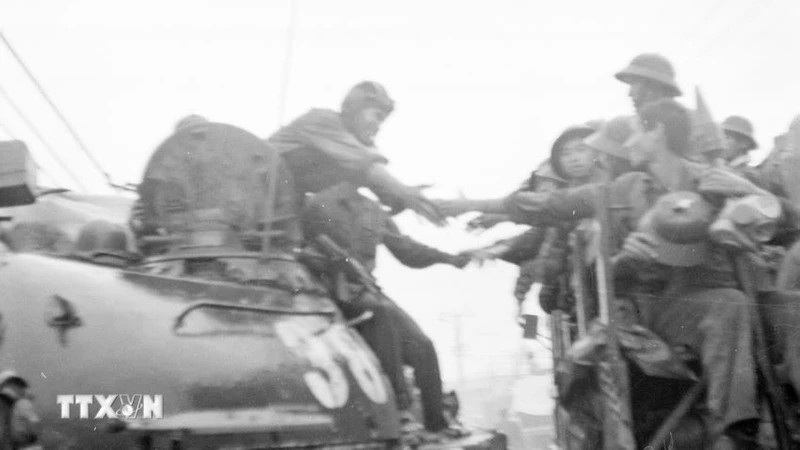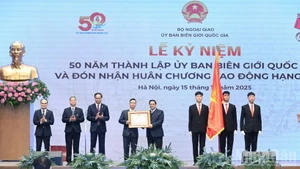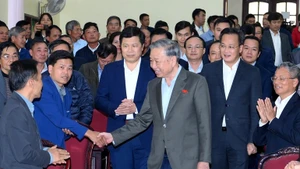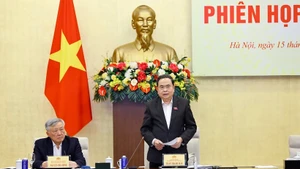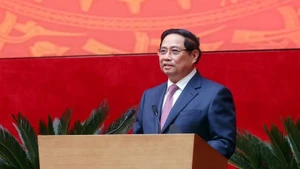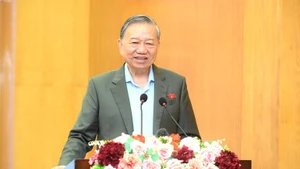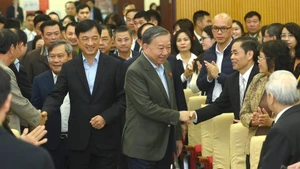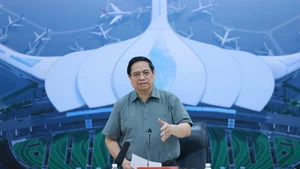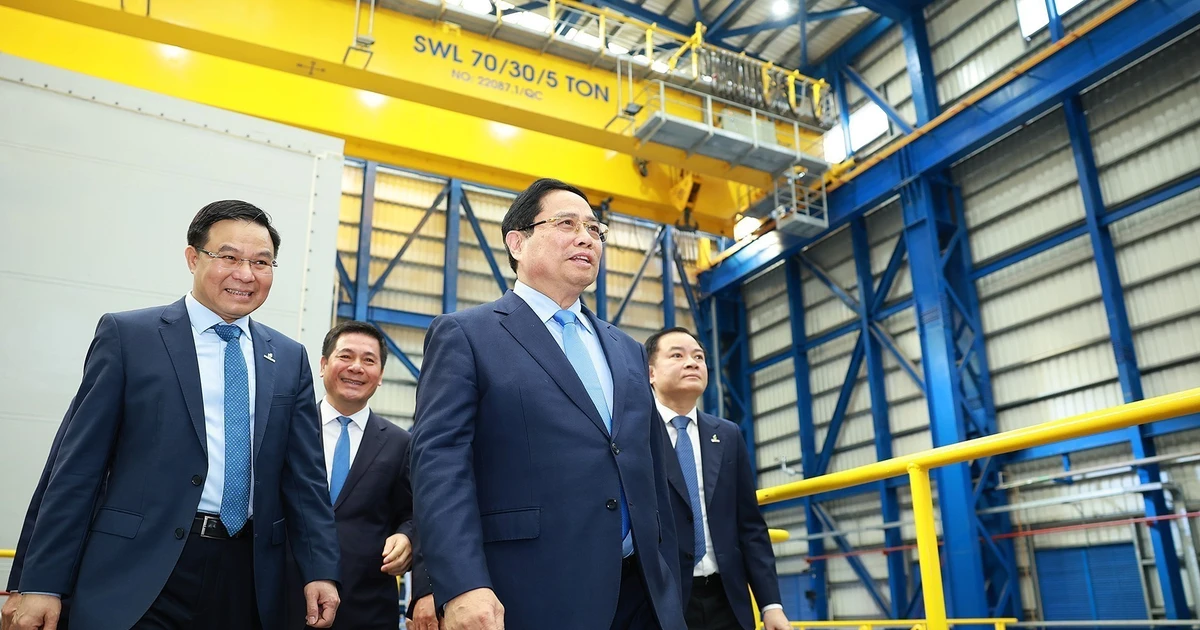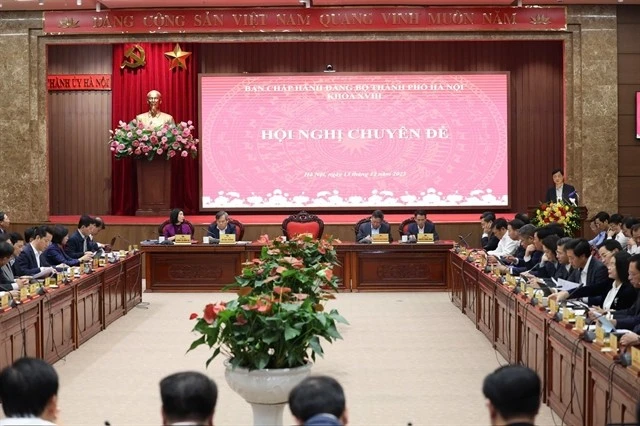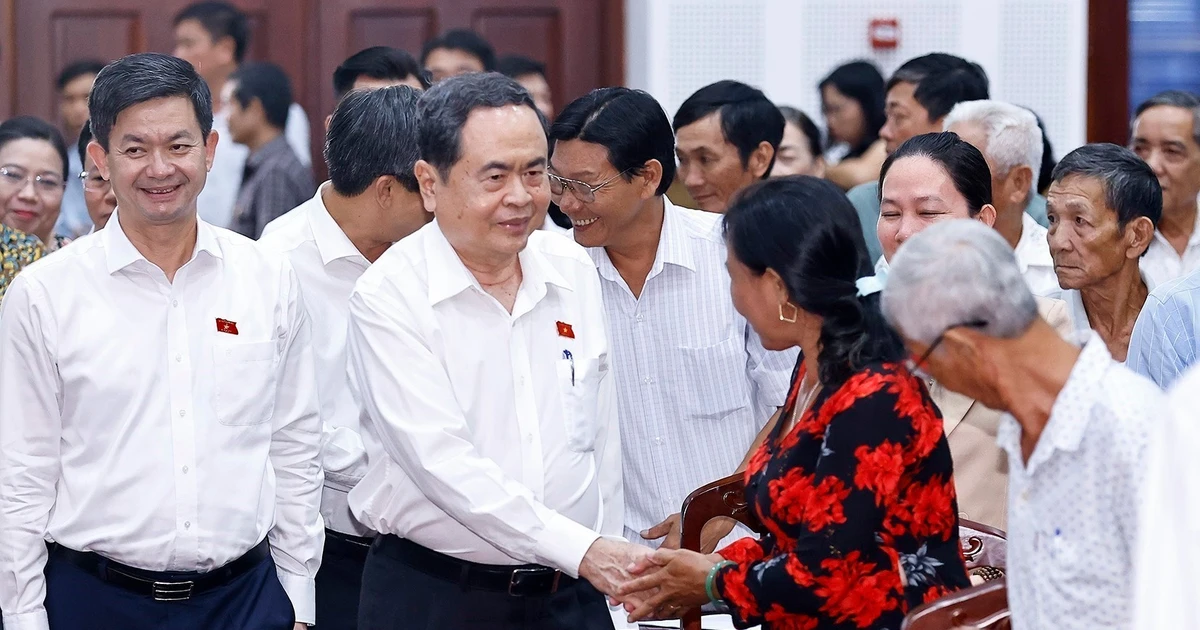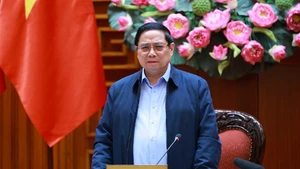On the morning of March 29, on Route 1, Regiment 18 of Division 325 drove by car, led by six tanks of Company 4, to attack the temporary defence line of Marine Brigade 258 on Hai Van Pass. Surprised and frightened, the enemy troops fled into the forest.
At 8am, the leading force of the regiment went down near the foot of the pass, quickly destroyed the mechanised troops going up to support and then attacked the Lien Chieu fuel depot.
At 10am, Division 325 reached the city centre and crossed Trinh Minh The Bridge to attack the enemy. At 11:30am, our soldiers occupied the port area, blocking the enemy's escape route. After that, the division attacked and controlled the radar telecommunications area, the combined warehouse and the operational support command of the Army Corps 1 of the Republic of Vietnam. By 13.30, Regiment 18 controlled Son Tra Peninsula, completing the mission of penetrating the campaign.
At the same time, in other directions, Division 304 of Army Corps 2 and the forces of Military Region 5 also continuously attacked and achieved many victories.
At 12:30 on March 29: In the Northwest direction, Regiment 9 (Division 304, Army Corps 2) and the enhanced force marched along Route 14, broke the blockade line of Division 3 of the Republic of Vietnam, crossed the Phuoc Tuong and Hoa Khanh mountains, reached the headquarters of Division 3 of the Republic of Vietnam, and occupied the city hall. From here, the regiment sent a unit to occupy the city centre.
At 12:30 on March 29: In the southwest direction, Regiment 66 and Regiment 24 (Division 304, Army Corps 2) defeated the enemy’s blocking forces in Ai Nghia and together with the forces of Military Region 5 occupied the Hoa Cam Training Centre, Da Nang Airport, the administrative building, and several other important targets.
Also on the morning of March 29, in the south and east directions, the forces of Military Region 5 ignored the outer targets and quickly developed into the city to occupied Da Nang Airport, Nuoc Man Airport, and other important targets.
At 15:00 on March 29, after occupying Nuoc Man Airport, Regiment 38 advanced to Son Tra Peninsula. Da Nang City was completely liberated.
On March 29, the enemy troops in Go Boi ran away, the people in eastern communes of Tuy Phuoc District rose up to liberate their homeland. The enemy's defence line in northern Quy Nhon was broken. Regiment 2 and Regiment 141 of Division 3 attacked the enemy in Lai Nghi and blocked Thu Thien Ha Bridge, cutting off the escape route of Division 22 of the Republic of Vietnam.
At 16:30 on March 29, the Politburo sent a telegram to comrade Pham Hung, instructing that: “The revolution in the South is entering a rapid development period”… “it is necessary to act promptly, resolutely and boldly”… “while urgently promoting the implementation of the planned strategic determination” it is necessary to “emphasise an urgent point that must be done immediately, which is to boldly increase the force to carry out the strategic division and encirclement in the west of Sai Gon, My Tho and Tan An areas” and “In fact, it can be considered that the campaign to liberate Sai Gon has begun from here.”
Division 7 was asked to leave three tanks to coordinate with local forces, while the remaining force was assigned the task of moving to the Northeastern front of Sai Gon. Discovering that our forces in Di Linh were still small, on March 29, Army Corps 2 of the Republic of Vietnam concentrated its forces to counterattack. Reconnaissance Company 5 continued to steadfastly hold its ground, repelled the enemy’s counterattacks, and held key positions in the district and town of Di Linh.
On the morning of March 29, in Dak Lak, Division 10 opened fire to attack Airborne Brigade 3 of the Republic of Vietnam, which was stationed on Phuong Hoang Pass, to prevent our main forces from advancing to Ninh Hoa and Nha Trang. After a few moments of shock, the enemy counterattacked fiercely. The enemy sent planes to bomb and shell our artillery positions. Throughout March 29 night, Engineer Company 17 of Regiment 66 urgently repaired the bridge at the foot of the pass.
In Binh Dinh, on March 29, the soldiers of Regiment 19 of Division 968 and Regiment 95A advanced up to join Division 3 of Military Region 5. Under the direct orders of the Military Region 5 Command, Division 968 and Division 3 attacked the enemy in Thu Thien, Lai Nghi, Phu Phong, and Binh Khe areas, effectively supporting the people's uprising to gain control.
On the same day of March 29, receiving orders to mobilise Army Corps 1 to participate in the campaign to liberate Sai Gon, the first unit of Auto Regiment 11 of Auto Division 571 of the Truong Son Troop, including 268 vehicles. Division 320 was mobilised from Vinh Linh to advance to Route 9 via Route 22 to Xe Su, from here to turn to Route 17 through Play Cu and Duc Lap to reach Dong Xoai. On the same day, 90 vehicles of Mobile Auto Regiment 13 of Regiment 7, Division 320, followed Highway 1 through Da Nang and then followed the Eastern Truong Son route to Dong Xoai.
On March 29, at the base in North Tay Ninh, the Central Office for South Vietnam held the 15th Conference and issued a resolution stating: Concentrating our spiritual strength and forces, fully promote the strength of the three-pronged attack, three types of troops, three regions, general offensive, general uprising, quickly defeat all puppet troops and puppet authorities, seize all government power into the hands of the people, with a fierce, rapid, and bold offensive spirit, deciding victory and liberating our communes, districts, provinces and the entire South.
